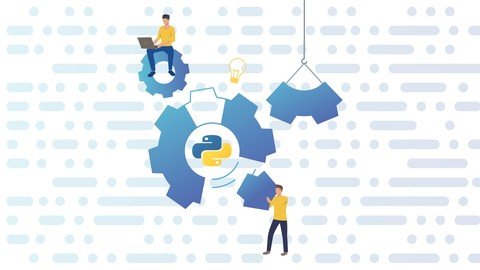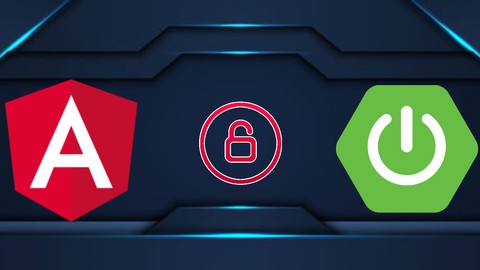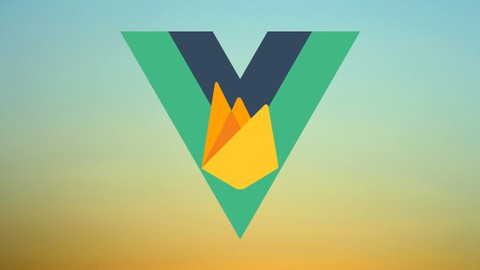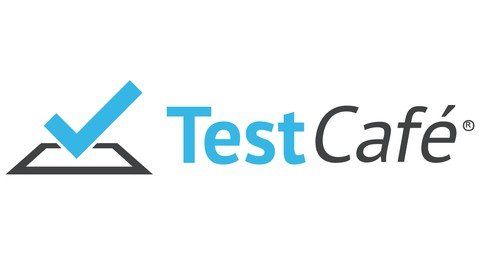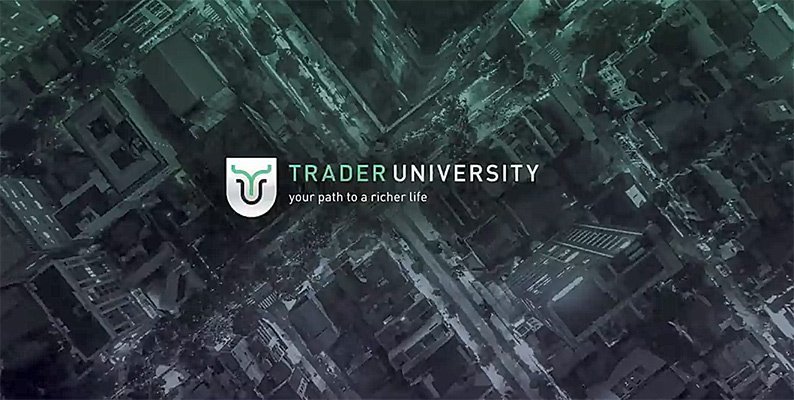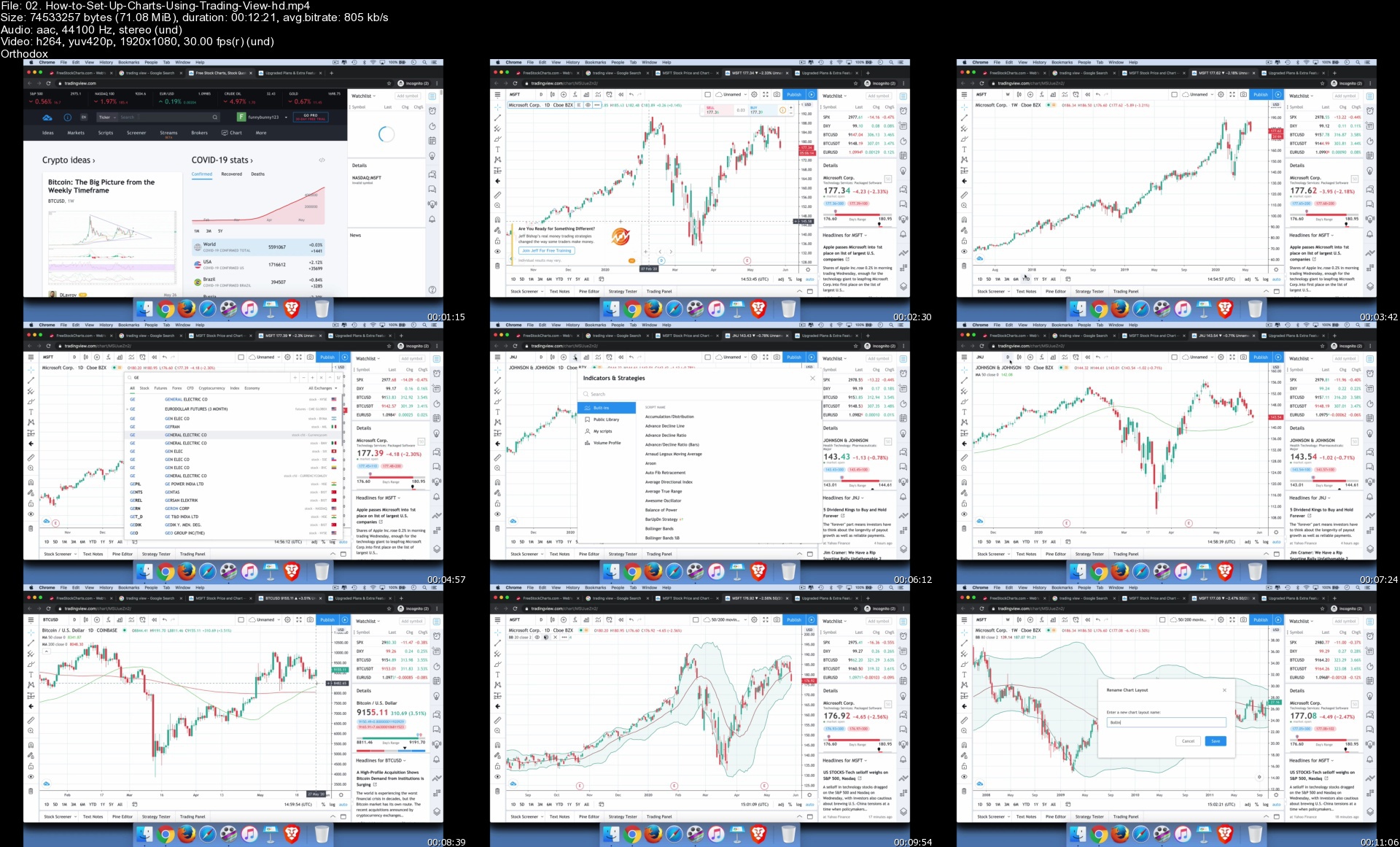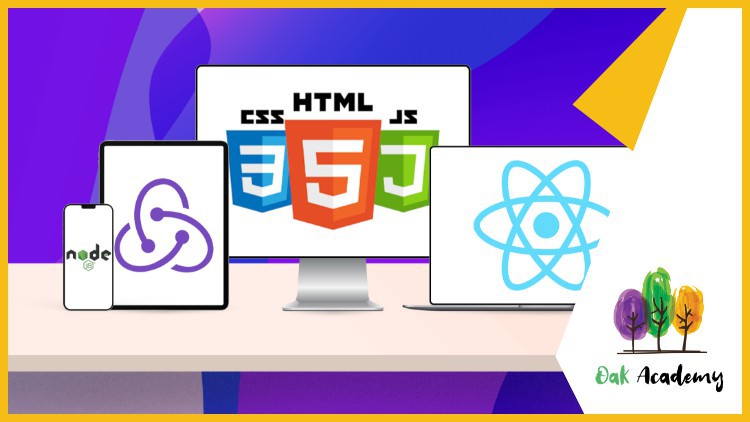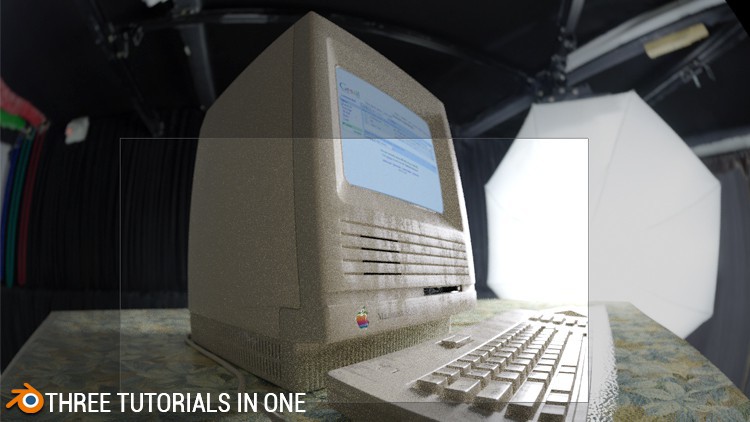Full Stack Web Development with Mern Full Stack Project
Full Stack Web Development with Mern Full Stack Project
MP4 | Video: h264, 1280x720 | Audio: AAC, 44.1 KHz, 2 Ch
Genre: eLearning | Language: English + srt | Duration: 388 lectures (42h 23m) | Size: 13.2 GB
Full Stack Web Development with MERN Stack - ReactJS, React Router, Angular, Nodejs, Express, Mongodb with React Project
What you'll learn
Learn to use the latest HTML5 and CSS3 to add unique styling to Bootstrap and React Js with redux, hooks and context for Full Stack Web Development
This course is the best way to learn React JS, NodeJs and Mongo DB
Learn and create amazing high quality Bootstrap 4 themes and UIs from scratch
Get a crash course of the Bootstrap Grid System with the theme layout
Create a beautiful, responsive landing page for any one with Mern stack (react js, nodejs, express js, mongodb)
You will learn to use basic tags which are used commonly
You will be able to create commonly used user login and registration pages by learning the form structure.
Learn components, props, states and component life cycle methods in React JS
Learn to connect to an external API for building real world mern stack project, react projects, web application
Learn Bootstrap 4 and UIs from scratch with web application, react projects, mern stack projects
Learn how to build single page applications with Mern stack and React JS
Learn to compile Sass in the easiest way possible using a GUI (for web development with react js, redux, express js, mongodb)
We will improve our knowledge step by step by learning the basics of CSS
It will be much easier to prepare web pages with Grid CSS and Flexbox features
You will be able to prepare lists in different formats
In the developing world, we will talk about all the details about web design compatible with different screens.
Create reusable React Components
Dive into Nodejs, learn rapidy growing web server technology, Nodejs & understand how NodeJS works with Node course!
By learning growing web server technology, Nodejs, you can improve your skills, get a new job and you can build powerful, robust web applications.
Learn the key concepts of the NodeJS
Learn to create servers, and understand how it works
Understand and use the Event Emitter
Understand Buffers, Streams, and Pipes
Learn routing with NodeJS
Learn the most used, open-source document database, and NoSQL database aka MongoDB
Learn the most used, open-source document database, and NoSQL database aka MongoDB
The most popular Object Data Modeling Library for MongoDB, Mongoose JS
Learn to execute CRUD - write queries to create, read, update and delete operations
Understand terminal commands for managing the database
The best testing framework for NodeJS, Mocha
Learn how easy to use MongoDB
How to write Functions, what are the differences between Function Declaration and Function Expression
What is DOM, how to manipulate DOM
How to create objects, how to update them, object methods
CSS or Cascading Style Sheets is a style sheet language used to style markup language.
HTML is a formatting language, not a programming language. Javascript is often necessary to make HTML "dynamic.
JavaScript is one of the most ubiquitous programming languages on the planet, mostly because it's the backbone of interactive web applications
JavaScript is one of the most ubiquitous programming languages on the planet, mostly because it's the backbone of interactive web applications
Web development is a broad description of the tasks and technologies that go into creating a website.
Some web developers will obtain a degree or certification in the field.
Some web developers will obtain a degree or certification in the field.
Each aspect of creating websites and applications entails a unique set of skills.
Web development is a broad description of the tasks and technologies that go into creating a website.
JavaScript is one of the most ubiquitous programming languages on the planet, mostly because it's the backbone of interactive web applications.
JavaScript is a curly-braced, dynamically typed, prototype-based, object-oriented programming language
JavaScript is the programming language that allows users to interact with the websites that they're visiting making it very important language for web developer
JavaScript is a text-based programming language used for client- and server-side development.
Choosing the best JavaScript framework for your web project depends on what you are looking for.
HTML, or hypertext markup language, is computer code used to create web pages and emails. Web developers, email marketers, web writers, and many others use HTML
HTML is a formatting language, not a programming language. Javascript is often necessary to make HTML "dynamic.
HTML is not considered a programming language but rather a markup or formatting language.
Bootstrap is a free frontend web development framework for creating responsive websites.
Google Flutter offers developers a UI toolkit that has some similarities to React Native.
Learning Nodejs is a great way to get into backend web development, or expand your fullstack development practice
React is an essential Javascript framework for web development. It is the most popular framework for developing web, mobile, and desktop app user interfaces.
React is a front-end library in Javascript that was developed by Facebook.
React, or React JS, is a front-end Javascript library for building UI components for the web.
There are many reasons why React is popular. One reason is that Facebook developed it.
Requirements
No prior knowledge needed for HTML, CSS, Javascript, React, Redux, Hooks, Context, NodeJs, Express, Mongodb
You will be learning Full Stack web development from scratch to master degree
This course will take you from scratch to the advanced level
Computer with access to the internet
Desire to learn javascript
Desire to learn HTML & CSS
Desire to learn React Js
Desire to learn react or react js with redux, hooks and context
Desire to build react applications, mern stack project, web applications from zero to hero
Desire to learn react native, react js with redux, hooks and context
Desire to learn full stack web development with react, react native, html, css, bootstrap
Desire to learn bootstrap for web design, website development
Desire to learn grid css
Desire to learn html, css, bootstrap
Desire to learn mern stack and mern stack project
Nothing else! It's just you, your computer and your ambition to get started today
Description
Full stack web development, mern stack, mern full stack, mern stack project, react, angular, Nodejs, MongoDB, Express js, full stack project
Hello there,
Welcome to Full Stack Web Development with Mern Full Stack Project course.
Full Stack Web Development with MERN - React, Redux, Hooks, Context, Nodejs, Express, MongoDB with React Project
JavaScript is the number one programming language for internet applications. During our course, you will be informed about the basics of JavaScript in detail and how to solve problems. Here's how a JavaScript code works, not just how it works. Because in today's JavaScript world, besides writing a code, you need to know how to debug this topic and be able to read every written JavaScript code. Full stack web development, mern stack, mern full stack, mern, web development, web application, react, web application development, full stack, mern stack project, web development project, full stack development
Whether you're interested in mastering responsive web design, creating WordPress templates using Bootstrap, or integrating Bootstrap with HTML5, and CSS3, Udemy has a top-rated course to help you achieve your goals.
HTML, or hypertext markup language, is computer code used to create web pages and emails. Web developers, email marketers, web writers, and many others use HTML.
Consider the devices that you use to access the internet on a daily basis. You'll notice that there isn't a standard screen size. Without CSS, rendering a website's text, layout, and design for these discrepancies in screens would be impossible. CSS is the backbone of all website styling work, and is rightfully considered a cornerstone of internet technology.
Each aspect of creating websites and applications entails a unique set of skills. Udemy offers a host of courses to bring you up to speed on modern front-end, back-end, and fullstack web development practices and skills.
This course will be your gateway to learn web development from scratch.
This course will take you from a complete beginner to a master in hours! By the way, you do not need to know anything about this course.
We'll be moving rapidly to give you the quickest, yet most thorough website building experience.
In this course, we have created a completely custom HTML learning environment for the first few sections of this course. Each lecture has an HTML page associated with it and has a start state.
With this course, you will improve your Bootstrap experience with HTML5 and CSS3 codes
This course will take you from a beginner to a more experienced level. You will learn HTML5, CSS3, Bootstrap 4, Javascript, React JS, Angular, NodeJS, and Mongo DB step by step with hands-on examples. And then you will be confident in using React JS, and if you ever get stuck, we will be there to help.
Angular is one of the most popular frameworks for building client apps with HTML, CSS. If you want to establish yourself as a front-end or a full-stack developer, you need to learn Angular.
Nodejs is an open-source, cross-platform, back-end, JavaScript runtime environment that executes JavaScript code outside a web browser. By learning growing web server technology, NodeJS, you can improve your skills, get a new job and you can build powerful, robust web applications.
MongoDB is a cross-platform document-oriented NoSQL database program. By using MongoDB, you can build a modern application database for your projects.
From Setup to Deploy, this course covers it all! You'll learn all about Components, Directives, Services, Forms, Http Access, Authentication, Optimizing an Angular App with Modules and Offline Compilation and much more - and in the end: You'll learn how to deploy an application!
React-Native is a library developed by the React team and it is widely used to create mobile applications for both Android and IOS. You do not need to learn Java, Android, Swift, Objective-C, or anything of that. React and JavaScript is all you need to create awesome mobile apps that work on both Android and iOS.
Learn by doing!
So we have made this course as simple as possible in order to take you through step by step so you can feel confident and get a truly good understanding of how to utilize ReactJS. In this course, we will be teaching React by creating various projects.
In this course you will learn;
Learn to use the latest HTML5 and CSS3 to add unique styling to Bootstrap
Learn and create amazing high-quality Bootstrap 4 themes and UIs from scratch
Master every single Bootstrap component
Learn to compile Sass in the easiest way possible using a GUI
Get a crash course of the Bootstrap Grid System with the theme layout
Learn how to add Website Scrolling Animation to any Bootstrap Component or HTML Element
We will start with local installation and react basics. After that, we will create 5 projects.
Project 1 - Learn, create react app and JSX with 'first-app'
Project 2 - Learn to React props system with 'blog-posts' app
Project 3 - Learn to react components, state, lifecycle methods, async operations, and much more... with the 'hemisphere' app
Project 4 - Handling event handlers, fetching data from an outside API, and showing list of records with 'image-list' app
Project 5 - Routing with React Router and using React Portals to render children outside the DOM hierarchy with the 'react-router' app
Become fluent in Angular terminologies, such as dependency injection, services, directives, transclusion, and more.
Design custom directives and save time and energy with easily reusable components.
Write quicker, better Angular code by discovering how AngularJS itself is built.
Realize the power of dependency injection, and how Angular accomplishes it.
Fully understand the architecture behind an Angular application and how to use it
You'll learn how asynchronous code works in Node and the Node event loop, as well as how to use the event emitter, streams, buffers, pipes, and work with files.
We'll see how that leads to building a web server in Node with hands-on examples.
The most popular Object Data Modeling Library for MongoDB, Mongoose JS
The best testing framework for NodeJS, Mocha
Writing queries for creating, reading, updating, and deleting operations
Advanced Features of MongooseJS4
Building an extensive backend API with Node.js & Express
Building our frontend to work with the API
Integrating React with our backend and creating a great workflow
Get, Post, Patch and Delete Request using MongoDB
State management with Redux
React Hooks, Async/Await & modern practices
Create a CRUD Application with MERN Stack
Handling Forms
JWT Authentication
Creating a build script, securing our keys, and deploy to Heroku using Git
Full stack web development
Web development
Front end web development
Full stack web development
Full stack developer
full web development
Html css javascript
Web developer
Full stack
Full stack web development
Web development
Front end web development
Full stack web development
Full stack developer
Php, Fullstack Web development
Html css javascript
Web developer
Full stack
mern stack
mern stack project
Html CSS bootstrap
Bootstrap WordPress
Bootstrap studio
mern stack web development
js react
react next js
react bootstrap
react full stack
react
bootstrap
react js
react projects
react css
mern stack project
What is web development?
Web development is a broad description of the tasks and technologies that go into creating a website. It can be as simple as making a static text-based website or as elaborate as developing an interactive dynamic website. You can break web development into two different categories: frontend (client-side) and backend (server-side). Frontend code executes on the user's computer. This can include HTML, JavaScript, and CSS. Backend code runs on the server - this commonly includes communicating with a database and often involves languages like Python, Ruby, Java, or PHP. Web development does not necessarily include the design process - it focuses on code. A web designer builds wireframes to mockup their vision for a website and then shares that with a developer. The developer is responsible for writing the code that implements the design.
What are the steps to becoming a web developer?
Some web developers will obtain a degree or certification in the field. However, most jobs don't require a specific degree or level of education, just demonstrated knowledge of the field. So, it is more important that you know how to show off your skills. You could highlight your skills through relevant work experience or a portfolio of past projects. You might also share code you have developed using a platform like GitHub, or participate in solution-based forums like StackOverflow that reward you for helping others. HTML, CSS, and JavaScript are the first three coding languages you'll need to learn to break into web development. You need these three essential elements to create a modern website and work as a frontend web developer. HTML (Hyper-Text Markup Language) specifies the content of the website and builds the backbone. CSS (Cascading Style Sheets) styles the content. JavaScript controls the interactive elements of the website.
How long does it take to become a web developer?
The answer to this question will depend on you. The more time you spend developing your skills, the faster you can become a web developer. The good news is that web development generally uses light-weight code that is easier to learn than many other languages. If dedicated, you can learn the basics of web development in a couple of months. But good web developers never stop learning. A better question might be, "What can I do to become a better web developer faster?" The answer to this question is practice. Becoming familiar with coding helps tremendously, but there is also a less obvious benefit of practicing. The more you code, the more you will run into problems or find bugs in your code. A significant aspect of web development is solving problems and debugging code. The better you get at solving problems and tracking down bugs, the faster you will get at coding.
What is JavaScript?
JavaScript is a curly-braced, dynamically typed, prototype-based, object-oriented programming language. It started as the programming language for the web and is one of the three layers of standard web technologies - the other two being HTML and CSS. JavaScript allows you to create and control content dynamically on a web page without requiring a page reload. Web browsers are able to interpret it, and when triggered by events, modify the HTML and CSS of a web page with dynamic updates. JavaScript also uses asynchronous calls to fetch data from web services in the background. Although it was initially only used in web browsers, JavaScript engines have since been put to use as servers with Node.js, included in desktop application frameworks like Electron, and embedded in phone frameworks like Apache Cordova.
Why is JavaScript important?
JavaScript is the programming language that allows users to interact with the websites that they're visiting, making it a very important language for web developers to know. In the past, most developers focused on the backend; JavaScript was only relevant when they needed to use visual effects. As web development evolved and the focus shifted towards user experience, programmers started to rely on JavaScript for their frontend code heavily. Today, most sites use JavaScript to fetch and submit data, use logic, and generate HTML in browsers. JavaScript can also communicate asynchronously with data servers in the background without interrupting the user interaction in the foreground. These features make JavaScript not only an important language but a necessary language for modern web development.
What is HTML and why is it important?
HTML stands for hyper-text markup language. Whether on a mobile device or a computer, every website that you browse is designed with HTML. HTML isn't a "programming language," but rather a "formatting language." It tells a browser how to display text, images, and other media elements. When HTML was first developed, it was fairly simple. For example, the text on a page could be bolded, italicized, or underlined, and images could be resized and aligned. Today, HTML is much more complex and dynamic, allowing front-end developers to create any layout or setup they desire.
Why is CSS and Javascript important for HTML?
HTML is a formatting language, not a programming language. Javascript is often necessary to make HTML "dynamic." While HTML can make it so that text is displayed on the screen, Javascript can update this text or make it move. Javascript is used for both front-end and back-end development, hand-in-hand with HTML, to create complex and attractive web designs. Meanwhile, CSS (Cascading Style Sheets) are used to organize the look and feel of a website and make the website easier to update and manipulate. Today, HTML, CSS, and Javascript are frequently used to develop responsive web designs - designs that react to a user's environment for a better user experience.
What is Cascading Style Sheets (CSS)?
CSS or Cascading Style Sheets is a style sheet language used to style markup language. Markup languages include HTML, XHML, XML, and other XML-based languages. The most common use of CSS is to style HTML web pages. Although HTML doesn't need CSS to function, every web page would look the same without it. With CSS, you can target specific elements in a web page and change the look and arrangement on the page. CSS can make an embedded image small or cover the entire webpage as a background. You can enlarge a heading and apply a specific font to stand out from the rest of the page. Other things you can do with CSS include changing the color of elements, making elements float to one side of the page, and the list goes on. Every web page uses HTML, and every web page that has its unique look uses CSS.
What careers use CSS?
CSS applies to any career that involves web development. Web designers create the templates, mockups, and styles for a website using HTML and CSS that web developers use to build websites. Front-end web developers use CSS with HTML and JavaScript to build front-end web applications that run in the browser. Fullstack web developers create both the part of a web application that runs in the browser and on the server and need to know CSS to make the front-end look good. Content managers may need to know CSS to apply custom styles to articles they publish through a content management system like WordPress. Other job titles that may require you to know CSS include junior web developer, social media manager, website editor, content editor, website project manager, website support specialist, and webmaster.
What is React Native?
Created by Facebook, React Native is an open-source-based mobile application framework that uses only JavaScript, making it capable of supporting both Android and iOS platforms. React, also known as React.js, saves time and effort for developers since they only need one programming language. The Native element allows developers to create JavaScript components to design software programs that run on various devices and platforms, such as smartphones, smart TVs, and laptops. With React Native, developers use the same concepts used in the original React framework to design a rich mobile user interface (UI) for various environments from existing components.
What careers use React Native?
Businesses that want to create mobile apps for iOS and Android simultaneously to ensure a seamless rollout need developers with a background in React Native. Careers in mobile app development that rely on React Native can count on professionals who can design and build stunning UIs in multiple platforms since it works hand-in-hand with platforms like Windows and tvOS. React Native developers are also vital to helping iOS, and Android companies update and otherwise modernize their apps with features like push notifications and animation for better effectiveness for mobile app subscribers. Developers with a background in React Native might work in full-stack development, designing and refining web-based games, websites, mobile apps, and more.
What is the difference between React Native and Google Flutter?
Google Flutter offers developers a UI toolkit that has some similarities to React Native. Flutter also has a native component and compiles web, mobile, and desktop applications from a single collection of source codes. Relying on existing code, Flutter is also a free and open-source framework for developers. Until this point, the two frameworks might sound similar. However, React Native is based on and only uses JavaScript, while Flutter only has a loose connection to the language. Google Flutter primarily uses a new language called Dart. Other differences between the two involve sourcing the tool itself and the installation process, setup and configuration, UI component and development, and community support.
What is React?
React is a front-end library in Javascript that was developed by Facebook. The simplest definition of React is that it is a user interface library used for building UI components for the web. But if that was all React did, it would be little more than a template library. Developers define components in React by using an HTML-like syntax called JSX. These encapsulated components manage their own state, making it simple to pass rich data to a component and keep the state of the application and its components out of the Document Object Model (DOM). These features give React components the ability to react dynamically and efficiently to changes in their state. A set of simple components in React can be composed into either simple single-page applications or large, complex web applications.
What is React used for?
React is an open-source JavaScript frontend library. Some developers consider it a frontend framework because it does more than standard libraries usually do. The most common use of React is to build dynamic user interfaces for single-page web applications. But the structure of React makes it useful for more than just creating websites. JSX, which is one feature of React, is a syntax extension for Javascript that provides a template for the HTML and manages the state of the element. But JSX can be used as an interface for things other than HTML. React Native uses React to build mobile applications. Here, JSX becomes an interface for mobile UIs instead of HTML. There are even a few libraries that use React and JSX to interact with and manage hardware like React Hardware.
What is Node.Js and what is it used for?
Node.Js is a server environment built for fast and easily scalable network applications. It was built on Chrome's JavaScript runtime and uses an event-driven, non-blocking model that makes it the best fit for applications that run on distributed devices and need to run in real-time. By using JavaScript, node.Js can be put to work by many software developers familiar with JavaScript. Because the code is open-source, you can also use it on any platform (Mac OS, Windows, or Linux). Node.js is the architecture for creating websites and real-time applications because it's easy for teams to learn, and it's fast. Examples of applications that use node.Js include video conferencing apps, chat servers, eCommerce software, and collaborative online gaming.
What are the advantages of Node.Js?
Node.Js is open-source, meaning it's free code for all developers. On top of that, it also means that there is a thriving community of Node.Js users and programmers that all add to the knowledge base. Many are happy to share their flavor of the code with other developers, and collectively, the Node.Js environment continues to be enhanced. Because Node.Js uses JavaScript, there is a large pool of developers that understand and can code in the environment. It's also a relatively simple environment for new team members to learn, making it an efficient choice for development teams with people that need training. Node.Js was developed on Push technology instead of web sockets, which is why it's the preferred choice for real-time communication applications and programs that need to be highly scalable.
What does it mean that Node.Js is a runtime system?
A runtime system is a platform where a software program runs. It's essentially an environment housing the collection of software and hardware that allows an application to execute (or run). Node.Js is a runtime system because it provides the environment necessary for applications to run within it, and no additional code or hardware is required. Because Node.Js makes use of JavaScript, it's a runtime system that provides a framework where you can use JavaScript to create and run programs. The JavaScript programming language (which is quite popular) is then automatically translated into machine code for the hardware to run the program in real-time. It's an efficient system, making it the preferred choice for many software and tech companies.
No prior knowledge is needed!
Why would you want to take this course?
Our answer is simple: The quality of teaching.
When you enroll, you will feel our seasoned instructors' expertise.
Video and Audio Production Quality
All our videos are created/produced as high-quality video and audio to provide you the best learning experience.
You will be,
Seeing clearly
Hearing clearly
Moving through the course without distractions
You'll also get
Lifetime Access to The Course
Fast & Friendly Support in the Q&A section
Udemy Certificate of Completion Ready for Download
Dive in now
Full Stack Web Development with Mern Full Stack Project
We offer full support, answering any questions.
See you in the course!
Who this course is for
If you want to learn HTML 5, CSS 3, Bootstrap 4, React JS, Angular, NodeJS and Mongo DB the first step in web development, completely and easily, you are at the right place.
People who are willing to make a career in the Web Development
If you want to building your own website, you should enroll
Anyone who wants to become an React Developer
Students who want to learn how to build fast single page web apps
Anyone interested in learning an extremely popular technology used by leading tech companies like Facebook, Instagram and Netflix
Anyone planning a job transformation and wants to become a React developer
Anyone looking to build a career as a NodeJS developer
Anyone who wants to learn MongoDB
Developers new to backend-side
Also, if you are looking to move in React-Native App development, it would be great for starting with React Js. Once you are familiar with concepts like JSX, props and states, same concepts are applied in React Native too. And moving into React Native would be so easy
People who want to become web development with html, css, javascript, react, react native
People who want to learn front end web development
People who want to learn backend web development
People who want to learn full stack web development
People who want to learn website development
People who want to become mern stack developer and create real work react projects, mern stack projects, web application
Homepage








